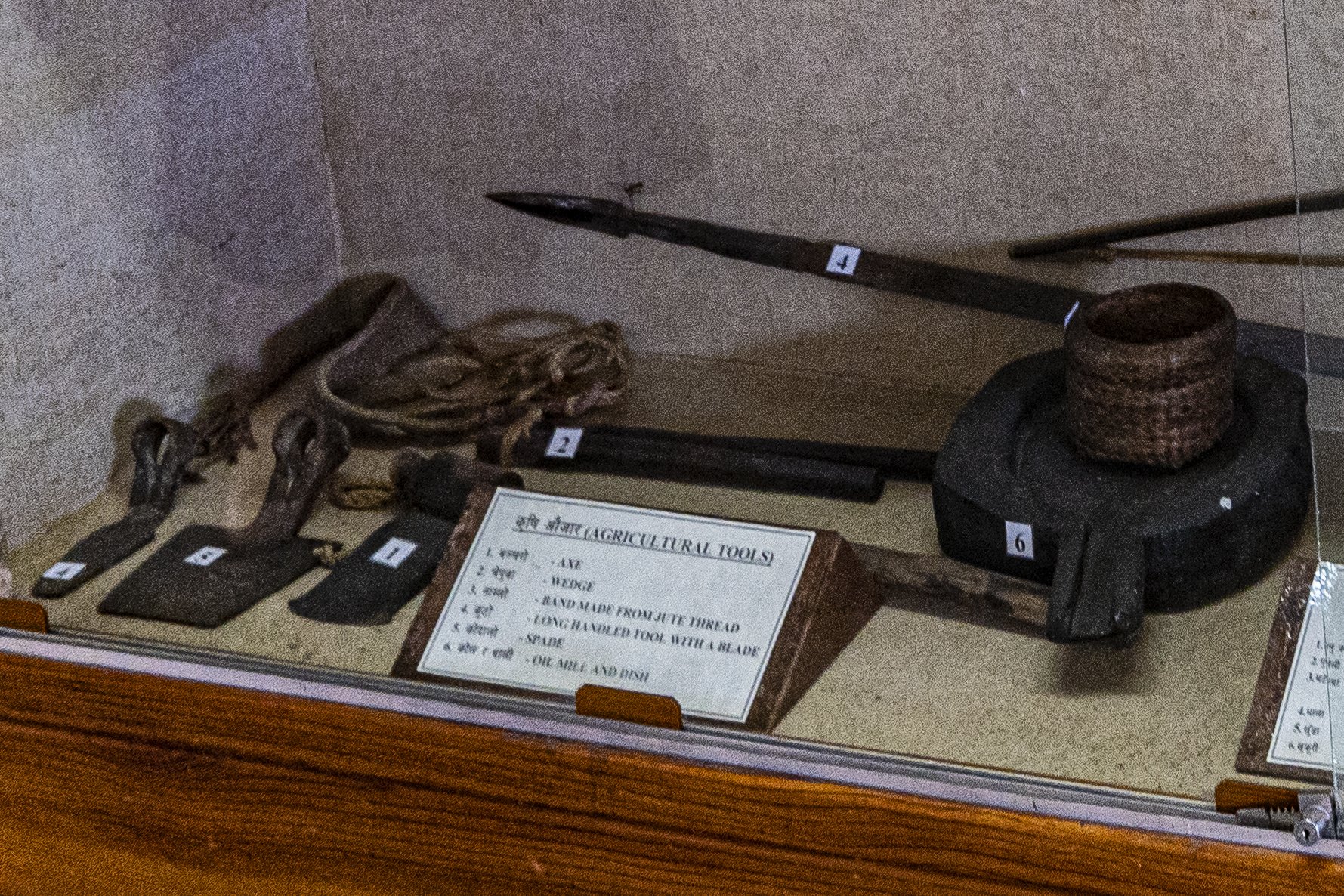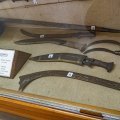The Kirat (ethnic group): photo 7
Photo 7 of 15 in Gallery: The Kirat (ethnic group)

Image title: Kirat traditional agricultural tools
Description of the photo
This photograph depicts the following traditional Kirat agriultural tools and utensils (kripi-aujar):
1. Bancro (बञ्चरो) referring in English to an “axe”. It can also be transliterated as: Bañcaro.
2. Cepuva (चेपुवा) referring in English to a “wedge”. It can also be transliterated as: Cepuvā.
3. Namlo (नाम्लो) referring in English to a “band made from Jute thread”. It can also be transliterated as: Nāmlo.
4. Kuto (कुटो) referring in English to a “long-handled tool with a blade”. It can also be transliterated as: Kuṭo.
5. Kodalo (कोदालो) referring in English to a “spade”. It can also be transliterated as: Kodālo.
6. Kol Ra Thali (कोल र थाली) referring in English to an “oil mill and dish”. It can also be transliterated as: Kola Ra Thālī.
Note: the word Kripi-aujar (कृपि-औजार), in English “agricultural tools”, can also be transliterated as kṛpi-aujār krpi-aujar, kṛpi-aujāra, kripi-aujara, krpi-aujara, kṛpyaujār, krpyaujar, kripyaujar, kṛpyaujāra, krpyaujara or kripyaujara.
Gallery information:
The Kirat people are an ancient civilization from Nepal whose kings ruled in Kathmandu valley since at least 650 B.C. Their native religion consists of worshopping natural entities. The Kirats consists of several groups of which the major branches are called the Yakha, Rai, Limbu and the Sunuwar
Photo details:
Date: 2019-11-11
Camera: SONY ILCE-6400
Exposure: 1/25
Aperture: f/3.5
ISO: 1000
Focal length: 18mm
High resolution:
Download file
Size: 2.18 MB
Resolution: 1779 x 1186
© Photograph by Gabe Hiemstra.
License: CC BY-NC-ND 4.0

